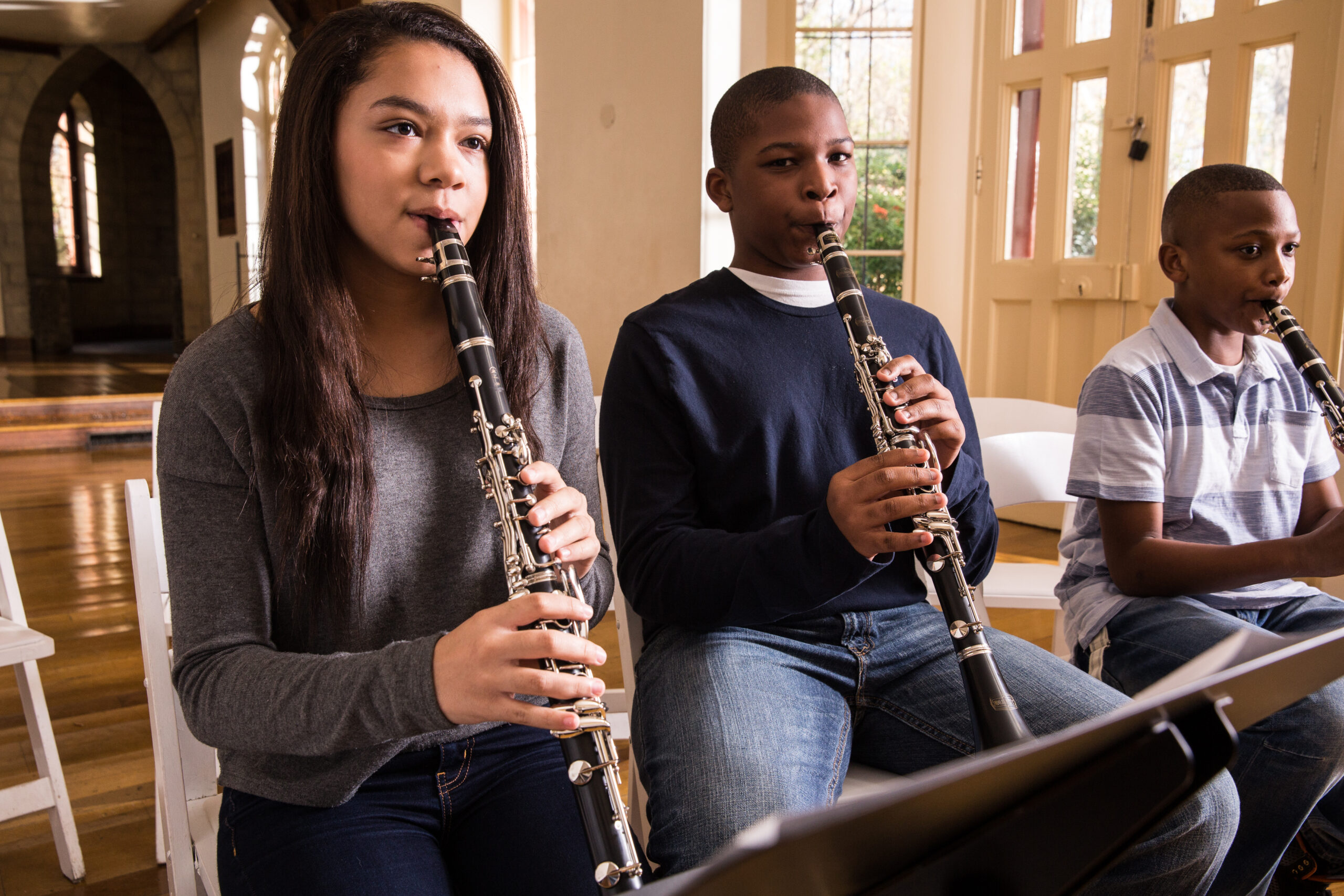April 09, 2015
The Most Common Mistakes Made by Clarinet Players


In general, a beautiful clarinet sound is considered to have five different qualities: depth, stability, focus, clarity, and an appropriate balance of “ring” and “darkness” that’s usually referred to as color. Unfortunately, there are a variety of mistakes or bad habits that can have a negative impact on the above qualities, making your clarinet sound dull or flat. If you find yourself making any of the below mistakes, don’t worry- you aren’t alone! From air speed issues to improper tongue placement or embouchure, here are the most common mistakes made by clarinet players, plus some advice for how to avoid them.
Air Speed
Most new students don’t understand how much air it takes to make a clarinet respond properly. In fact, many don’t strike a balance until they reach an intermediate playing level. Since the impact of air speed greatly affects tone quality, articulation, and response, the speed of the air must be fast enough for the player to feel resistance, and slow enough to produce a focused and clear sound. In order to get the air moving, use the concept of shouting as a guide. Since the concept is familiar to students, asking them to shout “HEY” is a good place to start. Starting with “hey” and refining the tone to “eee” gets the air moving toward the front of the mouth where it belongs. To help increase air speed, your instructor may have you perform an exercise that’s referred to as the Louder Clearer/Softer Clearer Exercise.
Embouchure
In many cases, an instructor will spend a long time on the mouthpiece and barrel before even moving onto the clarinet. If your instructor isn’t doing this, make it a personal goal to revisit the mouthpiece and barrel daily- even if you’re already playing on the entire instrument. When it comes to embouchure, the top teeth and corners are critical: the top teeth (grip) affect focus, while the corners affect endurance and overall tone quality. Most students don’t take in the wrong amount of the mouthpiece. If the clarinet squeaks, you’re taking in too much. If the sound is sharp and metallic, it can be too little. To form the proper embouchure, follow the straw principle: while you’re playing the clarinet, your mouth should be in a similar form as it is when you’re drinking a milkshake through a straw.
Tongue Placement
Tonguing seems to be the most difficult thing for clarinet instructors to teach, as they can’t actually see what your tongue is doing. The functions of the tongue are to shape the sound, in addition to starting and ending notes. To prevent clarinet players from picking up poor tongue placement, many clarinet teachers establish correct tonguing on the mouthpiece and barrel before even moving to the clarinet. To help establish proper tongue placement, remember that the clarinet sound happens at the front of the mouth, embouchure should be firm, and tongue placement determines shape of the oral cavity. Undertones can be caused by an oral cavity that’s too relaxed, while a tongue that’s too low in the front and floats up high in the back can actually shut down the air supply.
Improper Equipment
While the equipment and accessories one plays with is the easiest of the factors on this list to control, it’s also one of the most overlooked. A bad clarinet mouthpiece, reed, or ligature will never produce as beautiful a sound as good equipment, even when the clarinet is being played by a professional. Good equipment that’s worn out or in disrepair will hinder, rather than aid, in producing a crisp, clear sound. From clarinet reeds and ligatures to choosing the right mouthpiece, there are a variety of things you’ll need to pay attention to. If you purchased a used clarinet, head to your local repair shop for a diagnostic session. During this session, they’ll evaluate your instrument and determine which equipment is in working order and which equipment should be fixed or replaced before you head to your first lesson.
Inefficient Training
Knowing the proper mechanics is one thing, but the greater challenge is in turning those mechanics into lifelong habits. Learning proper tonguing from a professional is no different than taking driving lessons before heading to the DMV for your license- if you’re not learning from someone who is qualified, you probably aren’t learning proper technique. This is why finding the right teacher is so important. Not only will they guide you through learning the clarinet, but they’ll be able to recommend you to repair technicians should you ever damage or break your clarinet. So, whether you’re brand new to the clarinet or are picking it up again after a few years of neglect, find a qualified instructor and you’ll be well on your way to forming good habits and enjoying everything the clarinet has to offer.
When it comes to equipment, clarinet reeds are important. Learn How to Choose a Clarinet Reed.







